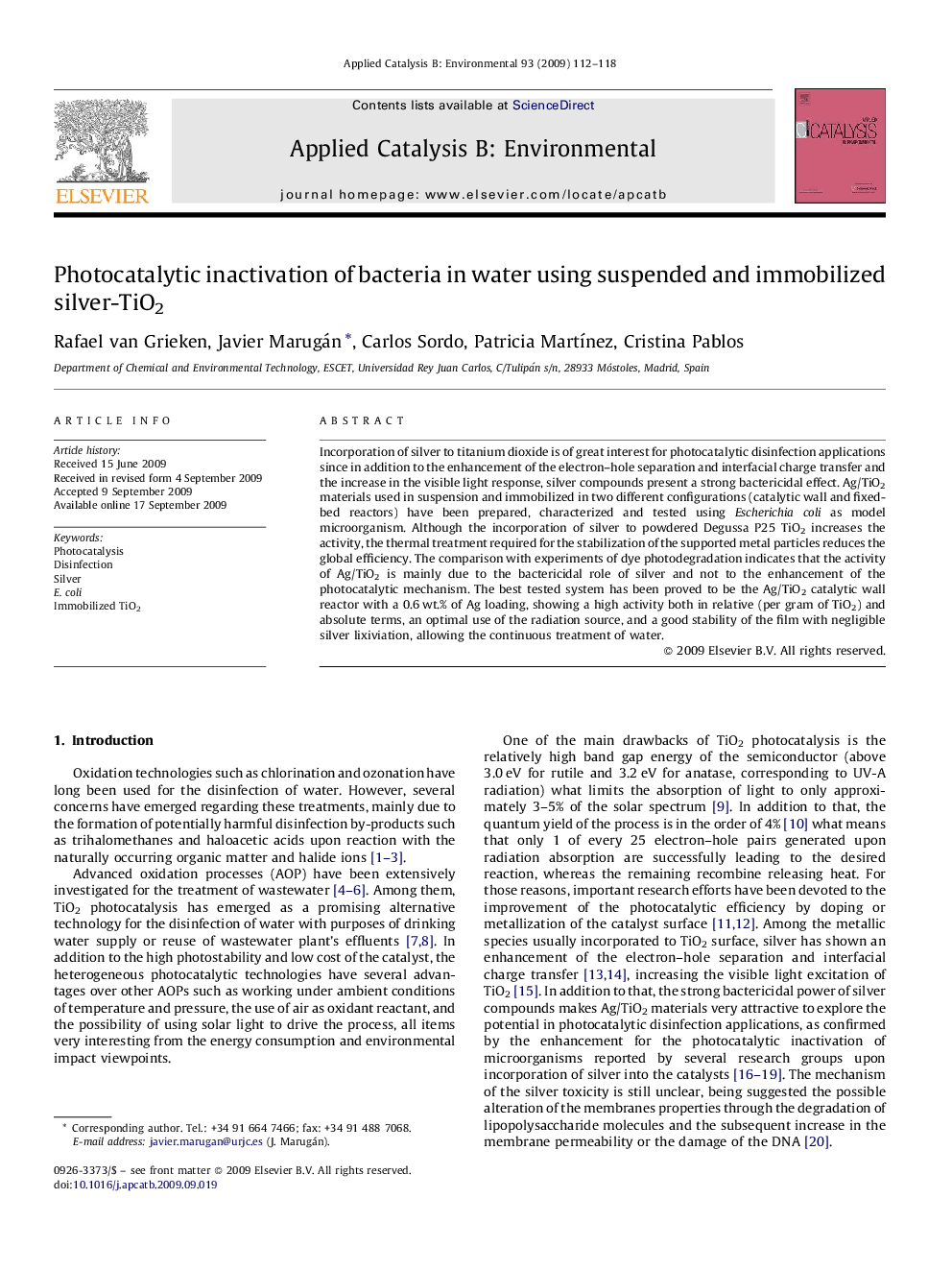| Article ID | Journal | Published Year | Pages | File Type |
|---|---|---|---|---|
| 47354 | Applied Catalysis B: Environmental | 2009 | 7 Pages |
Incorporation of silver to titanium dioxide is of great interest for photocatalytic disinfection applications since in addition to the enhancement of the electron–hole separation and interfacial charge transfer and the increase in the visible light response, silver compounds present a strong bactericidal effect. Ag/TiO2 materials used in suspension and immobilized in two different configurations (catalytic wall and fixed-bed reactors) have been prepared, characterized and tested using Escherichia coli as model microorganism. Although the incorporation of silver to powdered Degussa P25 TiO2 increases the activity, the thermal treatment required for the stabilization of the supported metal particles reduces the global efficiency. The comparison with experiments of dye photodegradation indicates that the activity of Ag/TiO2 is mainly due to the bactericidal role of silver and not to the enhancement of the photocatalytic mechanism. The best tested system has been proved to be the Ag/TiO2 catalytic wall reactor with a 0.6 wt.% of Ag loading, showing a high activity both in relative (per gram of TiO2) and absolute terms, an optimal use of the radiation source, and a good stability of the film with negligible silver lixiviation, allowing the continuous treatment of water.
